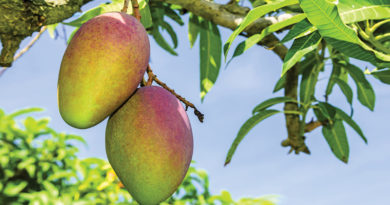Navigating Cannabis Terminology
When starting cannabinoid therapy, one must navigate a sea of confusing and ever-evolving terminology. The terminology most dominant in the public sphere comes from recreational market parlance. The cannabis plant taxonomy and nomenclature debate rage on, but for simplicity, I’ll leave the discussion and details for the titans of botany.
For medical purposes, we need a standardized system of classification and terminology. Formulations with consistent ingredient profiles allow for accurate dosing and more predictable, therapeutic outcomes.
Currently, patients encounter a soup of terminology on Canadian licensed producer’s websites and in dispensaries. Terms such as indica, sativa, and hybrid (meaning a mix of sativa and indica) in the recreational market, describe cannabis plant types. The indica plant types have broader leaves and shorter stature as well as different physical effects on the body such as sedation, pain reduction, and “in-the-body” effects. By comparison, sativa plants are taller with narrow leaves and feature more energizing, cognitively uplifting effects.
Email Newsletter
Join thousands of other growers who are already receiving our monthly newsletter.
On the product lists, folks encounter colorful “strain” names, for example: indica dominant, Blueberry strain or Purple Kush, or sativa dominant, Trainwreck, etc.
Each strain description lists reported effects such as increased focus, feelings of calm, cerebrally stimulating, creative, sedating, etc.
Read also: The Crazy, Colorful World of Cannabis Slang
However, over many years, cross breeding of the original plant varieties from different parts of the world, called landraces, diluted their genetic profiles. Each cannabis landrace produced specific chemicals in response to the unique environment in which it grew. Today’s cannabis plants are a hybrid of the original landraces and do not resemble the unique fingerprint of their predecessors.
By comparison, commercial agricultural practices standardize varieties. Wherever you buy a Golden Delicious, the apple variety is consistent from market to market.
For cannabis plants, strain names do not reflect a standardized product and therefore a Blueberry strain from one dispensary will have a different chemical composition than other Blueberry strains sold elsewhere.
For scientific and medical purposes, the term strain is of little relevance (I hear protest as I write this). Scientifically, strains refer to viruses and bacteria, or, in casual conversation, to a muscle strain.
In scientific terms, genetic copies (clones) of a particular cannabis plant with a specific profile of “ingredients” are called chemical varieties, or chemovar for short.
When shopping for cannabis products, a current lab test should show the amounts of each compound specific to that batch of oil/tincture/product or flower (herb).
One of the easiest ways patients can understand cannabis is to think of a recipe or food product label. Each plant or a product made from the plant, such as an oil formulation, contains “ingredients” present in various ratios, amounts, and composition.
Read also: Using Terpenes and Scent to Choose Cannabis Strains
With more than 500 compounds in cannabis plants, 100 or so of these compounds are cannabinoids. THC and CBD are the most commonly known cannabinoids.
Next time you bristle at the neighbor vaping on their deck, the smell is not from THC. The aromas wafting across the fence are terpenes (classes of compounds found throughout the plant kingdom, including cannabis plants). Terpenes impart flavor and fragrance to plants, foods, and commercial products such as perfumes.
Terpenes may work together with the cannabinoids to produce effects in the body.
Cannabis contains other classes of compounds (also found in other plants) and research has yet to illuminate their actions.
Some well-known terpenes found in cannabis and other plants include: linalool (lavender), limonene (lemons), pinene (pines, fir, mace), beta-caryophyllene (black pepper), and myrcene (celery leaf, hops, lemongrass, rosemary).
When starting cannabinoid therapy, clinicians begin with three basic cannabis plant types and their product profiles to address patient symptoms:
- High THC, Low CBD plants/formulations
- More equal ratios of THC to CBD plants/formulations
- High CBD, Low THC plants/formulations
Read also: The Top 6 Types of Terpenes Found in Cannabis
Both THC and CBD are psychoactive. CBD in low doses can be like caffeine, however, at very high doses (rarely taken due to cost), it may sedate. THC can be impairing, however, depending on the ratio to CBD, the dosage, patient’s state of wellness, their medication regimen, metabolism, genetics, and other factors, it may not impair.
Clinicians may also consider the terpene profiles and recommend certain terpenes to address medical conditions or symptoms.
Each person is unique in their response to cannabinoid therapy due to differences in their genetics, disease/disorder state, current medication regime, organ and system function, and many other factors. Similar to choosing anti-depressants and anti-seizure medications, patients will need to try many medications to find what works best for them. We aim through trial and error to tailor therapy to the lowest effective dose formulation to address patient symptoms and conditions. Like most medications, 100 per cent relief may be an unrealistic expectation, but with perseverance we hope patients experience a reduction in symptoms, and improvement in health and quality of life.




